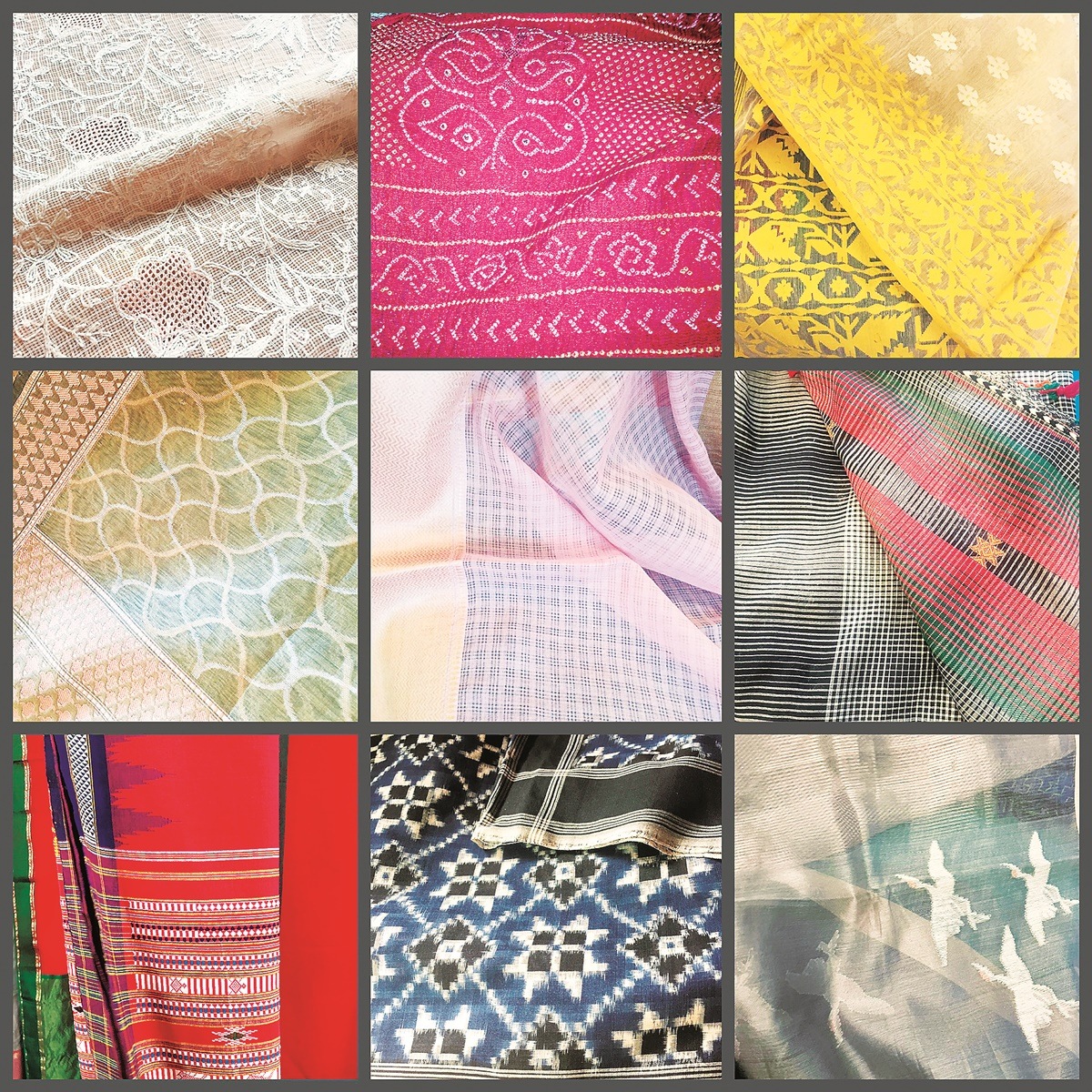Laila Tyabji on summer and the ever-giving six yards
A garment that never becomes dated, each sari becomes the person who wears it.
 A weaver on the loom (Source: Dastkar)
A weaver on the loom (Source: Dastkar) Summer, after a few wonky starts, is finally here. To cheery optimists, it means mangoes and glorious golden cascades of amaltas, to the gloomy, it spells heat, sweat and dust, water shortages and rising electricity bills.
As that 21st-century dinosaur, a sari-wearing traditionalist, summer begins for me with Holi, and my ritual annual turnaround of silk to cotton. Heera, our housekeeper, brings the stepladder and mounts up to the loft, fetching my cotton saris and replacing the now unwanted silks.
Within the cottons there is a second sequence and system. First come the heavier weights and brighter colours, suitable for the start of summer, and worn again later, in the almost chilly days before Diwali. The begumpuris, Kutchi bhujodis, the ilkils, the Orissa sambalpuris and Andhra Pochampally ikats, my favourite madder-dyed kotpads and cherished 45-year-old red and green bomkai.
 The myriad weaves from different regions of the country (Source: Dastkar)
The myriad weaves from different regions of the country (Source: Dastkar)
Then come lighter, paler weaves: the translucent Kota dorias, delicate Maheshwaris, and Chanderis, light as a breeze, the Phulia mulls, my precious Dhakai jamdaanis, Sanganeri, Venkatgiri, bagru and bagh mulmuls with their delicate blockprinted floral butis, bandinis and laherias, exquisite Banarsi cut work cottons… lots of pinks, peaches, lemon yellow, aquamarine, pale turquoise and cooling indigo blues. I never wear black in summer! And in the middle, at the end of May or early June, in that burning white glaze when the sun is at its highest and hottest, I only wear whites and creams. Kerala white and gold, white-on-white embroidered chikankari shadow-work, khari print, and gold-edged Kota doria. I am not much of a chiffon and georgette type. Nor is linen, everyone’s craze, mine. It’s fine for shirts, but it doesn’t drape well, and I am not a fan of that creased, crumpled look.
A sari is truly miraculous — a simple strip of cloth that adapts to every shape and size, occasion and season, wrapping itself into a flowing, versatile and becoming garb. It comes in every shade of light and dark, bright or somber, it’s not subject to colour trends or fashion forecasts. Nor does it discriminate between youth and age. The sari I buy to wear today can be worn 100 years hence, just as I still wear my grandmother’s saris. The only bar to buying more saris is the space in one’s cupboards! Give away one for every one you buy.
What stories saris tell. Stories of family, community, climate, geography and folklore… Their designs and variations encompass the motifs and rituals of birth, puberty, betrothal, marriage and death; 5,000 years of history and the symbols, colours and wearing styles of India’s seasons, religions, flora, fauna, festivals and manifold occupations. The parrot and peacock, elephant, tiger and fish, lotus and paisley, a border of temple spires, the rudraksha or ashrafi butis scattered in the body.
Some years ago, I was on the jury at NIFT, when an aspiring young designer came up and greeted me with, “Wow ma’am, I didn’t know anyone with grey hair and a sari could have “attitude’.” A typical knee-jerk reaction today — sari wearers are automatically associated with the dull, the passé and the unsuccessful.
In reality, the sari’s extraordinary strength — contributing to its survival as a wearing style, even in an age of globalised culture — is that each sari becomes the person who wears it, lending itself to the shape, style, and persona of the wearer. Be it Mandira Bedi, who can look sensuous in one or Indira Nooyi, the epitome power woman. It’s the fashion industry’s worst nightmare; a garment that never becomes dated. The fact that a sari is so timeless is the reason for its longevity, but also why it may be endangered. It poses too much of a threat to the garment industry, who want products with built-in obsolescence. It is also a bit of a bore for the young, who like to reinvent themselves rather than meekly mirror their parents.
 Laila Tyabji (Source: Dastkar)
Laila Tyabji (Source: Dastkar)
Between weavers abandoning age-old traditions and the urban young opting for Western wear, people keep predicting the death of the sari! In truth, it goes on forever, evolving as it goes. Kanjeeveram and Banarsi give way momentarily to linen and lace, zardozi to Swarovski crystals. Bustiers and T-shirts replace cholis. Then designers like Sanjay Garg and Rakesh Thakore come and revive Chanderi and ikat.
We are so lucky to have such a choice. Rta Kapur Chisti’s Sari School teaches 108 different wearing styles! And let’s not forget the myriad regional weaving traditions, or the many many ways of surface ornamentation all over India — appliqué, block printing, kantha, kasuti, and kalamkari, zardozi, mukesh and sequinwork, khari stamping, bandini and laheria…
As we swirl around in these delicious cool weaves, (that bare midriff is really a genius air trap) spare a thought for the poor weavers, sweating over their looms. When will our craftspeople be able to work in the conditions their knowledge and skills deserve? A mixture of folklore, technology, technique, economics and art — all there in their hands and heads. They give us so much and get back so little.
The writer is founder member and chairperson Dastkar Society for Crafts & Craftspeople—



- 01
- 02
- 03
- 04
- 05




























